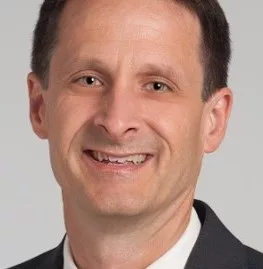
Healthcare
MarCom Budget Benchmarks
How much do my peers spend?
How do they spend it?
A little more than two decades ago, I was a new healthcare marketer at my first conference of hospital chief financial officers. My hope was to learn as much as I could about this new (to me) industry. My take-away: marketing didn’t matter much to hospital CFOs. When I nervously asked a panel where marketing and communications fit into panelists’ budget priorities, I swear the panelists exchanged amused glances. One explained that he’d never met a hospital marketer who could explain that a patient would not have come to his hospital anyway, without marketing. We needed healthcare marcom budget benchmarks.
Red-headed Stepchild.
My employer generously sent me to a few other hospital executive conferences for the same reason, and I generally got the same dismissive answers about volume, physician relations, patient satisfaction, development, awareness, differentiation and branding. All, according to common C-suite thinking, were automatic. There was no need for professional intervention in any of it. Happily, that has been changing. Long after it had become a central part of strategy and decision-making in other trillion-dollar industries, marcom has largely become embraced as a professional discipline and a skilled contributor to bottom lines. But my healthcare marcom peers still often find themselves without tools to make internal budget arguments, document results or even learn how their healthcare marcom budget benchmarks against others in the industry, particularly those they view as leaders in the category and peers.
How much do others spend?
Thus some heartening news: the second Healthcare Marketing & Communication Benchmarking Study has launched. It’s a study started last year by 24 sponsoring systems (most of them academic medical centers) that shared the cost and well as their data, and 27 contributing hospitals systems that shared their data. All got to see the results, although sponsoring systems got to look at, filter and distribute the results at a deeper level. At the 30,000-foot view, the 2016 averages (computed in 2017) told a story hospital marketers never had access to before. Overall marketing and communication budgets, of course, varied by type and size of system as well as scope of work. Some system marcom budgets, for example, might cover physician relations and internal communications; some do not. Expenses ranged from $2 million to $82 million. The average was $15.7 million, or .7% of net patient revenue. (In other large industries, the average marketing budget is six-to-eight percent of net revenue).
And how do they spend it?
As for media channels: the systems that joined the survey spent about 30% of their total marketing expenditures on traditional advertising. That came to about $6.6 million each. Despite an apparently growing interest in digital marketing, digital expenses (web development, digital media management, CRM and data services and social media management) represented another 14.7%. It may be because digital expenses are inherently less expensive, or it may be because the 57 systems and hospitals found traditional advertising was still more effective in building awareness. We’ll find out more in the second benchmarking survey about to start. The rest of the budgets went to various community resources, payroll, other communication tactics and other internal expenses.* Like last year, contributors – those systems that supplied data but did not share survey costs – will get blinded access to the data of 5-to-10 of their peers. They get to choose which ones. Sponsors get to explore spends, FTE levels, allocations and more at more granular, filtered levels through blinded access to all the data. They all had more presentation flexibility to share results internally and had optional access to a Marketing360 dashboard to help them track their ongoing performance (including their digital campaigns).
Available to all.
Most importantly, however, there’s a tool not only to continue to elevate system marketing performance but the voice of healthcare system marketers. Full disclosure: I’m a part of Gelb Consulting, which oversees this project. But I’m telling you about it because the deadline to sign up is August 1st. And, in truth, I wish I had such a resource when I was last overseeing marketing and communication for an academic medical center. It would have been a truly helpful guide in my own strategic thinking and aligning more tightly with the system’ larger strategic aims. And though I worked in a forward-thinking organization, it would have also helped elevate healthcare marketing’s position and credibility in the system. System marketers unite. You have nothing to lose but your chains.
Let’s Talk
We will help you overcome strategic challenges to realize the business value you seek.

